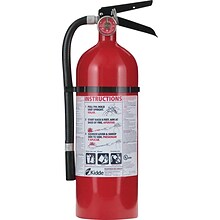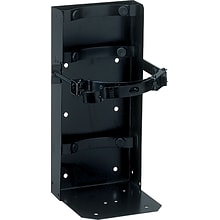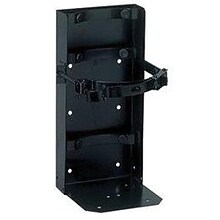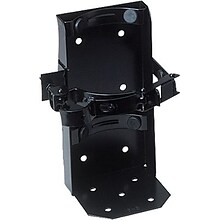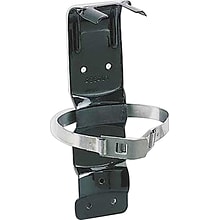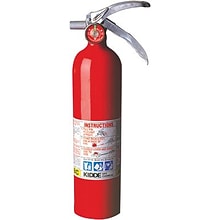Fire extinguishers knock out small fires
Fire extinguishers contain a suppressing agent to prevent small fires from spreading. They feature an impact-resistant valve and stainless steel body for long-term durability. An easy-to-pull safety pin lets you operate the device, and clear labels show handling instructions. For convenient mounting, they include a wall hanger or hook. Commercial and home fire extinguishers, along with smoke alarms and detectors, form the first line of defense against potential fire hazards.
Wet chemical fire extinguishers work for commercial kitchens
Wet chemical fire extinguishers offer unique cooling properties with outstanding heat absorption to prevent re-ignition. The integrated spray nozzle delivers a fine discharge to burning grease to avoid dangerous splatters. Aside from Class K fires involving cooking fats and oils, a wet chemical fire extinguisher can also tackle Class A fires. Replace empty fire extinguishers with new units to ensure optimal protection for your place of operation. To maintain a safe working environment, leak detectors reveal gas or thermal leaks in manned or unmanned areas.
Fire extinguishing agents suit different fire classes
Fire extinguishers deal with specific fire classes. In case a fire breaks out, it's crucial to use the proper equipment with the appropriate extinguishing substance. In addition to wet chemicals, other fire extinguishing agents include:
- Water and foam: Removes the heat and separates the oxygen supply from other fire elements
- Dry chemical: Forms a barrier between the fuel and oxygen supply
- Carbon dioxide: Takes away the oxygen and heat elements through an extremely cold discharge
Foam and water fire extinguishers work against Class A fires caused by wood, paper, plastics, rubber, and fabrics. Dry chemical fire extinguishers tackle Class A, B, and C fires involving common combustibles, flammable substances, and electrical equipment. Ideal for Class B and C fires, CO2 fire extinguishers manage small fires due to gasoline, alcohols, solvents, and faulty electrical wiring.
Keeping homes safe from the silent killer
Carbon monoxide, also known as the silent killer, is extremely dangerous. If fuel-burning appliances, such as furnaces, water heaters, and fireplaces, are faulty, they may emit carbon monoxide. To help safeguard against poisoning from this gas, carbon monoxide detectors are an essential in homes.
